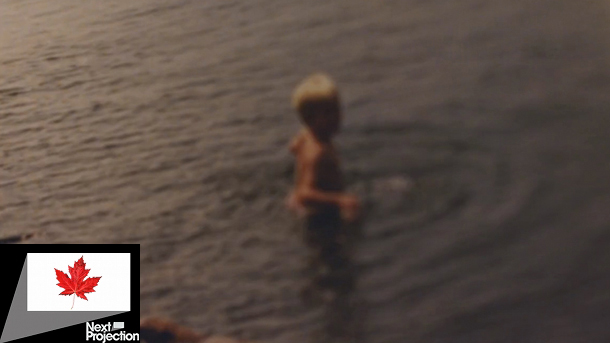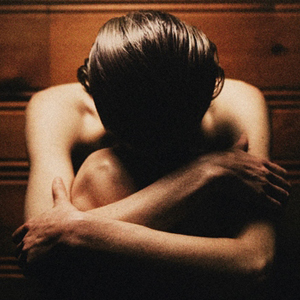Cast: Claudia Dey, Grace Glowicki, Marvin Weintraub
Director: Yonah Lewis, Calvin Thomas
Country: Canada
Genre: Drama | Horror | Sci-Fi
Official Trailer: Here
Editor’s Notes: The Oxbow Cure opens Friday, August 23rd at the TIFF Bell Lightbox.
Self-placed in isolation amongst a desolate winter environment, Lena (Claudia Dey) searches for solace to remedy the uncertainty and ennui that comes with knowing of one’s fatal disease. The serene atmosphere of quiet nothingness and large expanses of fresh white powder is put into conversation with Lena’s inner nature and motivation to discover herself and face her demons. Seeking the meditative calm that is evoked by nature, Lena’s life back home prevents her from letting go. The fight between nature and modernity illustrates the contradiction between being truly alive in nature and living one’s ordinary life of work, friends, and bus stops. The environment is constantly juxtaposed with the elements of everyday life which blinds one from seeing the true nature of life. With death by her side, Lena ventures into the wild winter forests to discover something human—something real.
With a somewhat Malickian design, replete with shots of the sun, orchestral music, and a provocative visual rhetoric, The Oxbow Cure deals with notions of humanism and existentialism in primarily art-oriented ways. Rather than utilizing monologues or complex circumstances, this relatively simplistic, naturalistic film expresses itself through sound and image.
With a somewhat Malickian design, replete with shots of the sun, orchestral music, and a provocative visual rhetoric, The Oxbow Cure (2013) deals with notions of humanism and existentialism in primarily art-oriented ways. Rather than utilizing monologues or complex circumstances, this relatively simplistic, naturalistic film expresses itself through sound and image. The beautiful, well chosen music coupled with delicately crafted cinematography and a captivating lead performance shore up a sensory experience—a journey through cinema—that is primarily felt by affect. One’s body is shaken, and the images and sounds speak to a pre-subjective understanding, or intuition, of the feelings of isolation, ennui, and contemplation that are evoked by the film through formal means.
Beginning the film with a TV reflected by a door followed by a montage of Lena at home surrounded by people, one gets a sense of contemporary human life. The bass track which is used quite regularly throughout the film to juxtapose the classical music lends a sinister tone to certain scenes, typically with shots of haunting images or everyday struggles. After this chaotic start, a long tracking take of a serene winter setting coupled with a more relaxing soundtrack is found. One recognizes the contrast that Lewis and Thomas are making here. This plight between nature and man, peace and resistance, is powerfully expressed by the ascetic filmmaking. The filmmakers are careful to slowly unravel the film’s heart.
Full of meditative shots, such as a slow tracking shot from a window exposing beautiful snow to pitch darkness to another window exposing beautiful snow, The Oxbow Cure works as well as a narrative as it does as a mood-piece. With contrasts such as pleasing white snow and petrifying darkness, the film takes one on an emotional journey, one that admits the viewer to experience the sense of contemplation it is at once evoking. Though Lena is on a physical journey, the audience is permitted to vicariously experience a mental journey of a similar nature.
As a rumination on how the modern world contradicts nature, the film interweaves shots of existence with shots of the terrain. One begins to see the striking difference between human existence and consciousness with the blissful existence of nature. Seeking to find the blissful natural existence of man, Lena voyages through the snow only to find damning and perplexing encounters, such as a human-like demon of sorts. The contrast is made more obvious as the film progresses. For example, a scene where a man in a hospital is crosscut with a shot of clear water flowing beneath ice amongst a tranquil winter environment gives voice to the uncertain nature of man which is capable both of desperation and disease as well as peace and tranquility. Moreover, there are shots of the landscape put in conjunction with the sounds of breathing and the man’s hospital machinery beeping. What this evokes is difficult to express in words. It is at once familiar and unfamiliar. Humans know both of the peace of nature and the demonic sense of hospitals and death; to put these two sensibilities into conversation is quite jarring. It shifts one’s perception of the happenings and makes one more open to the contemplative tone found in the film.
Full of meditative shots, such as a slow tracking shot from a window exposing beautiful snow to pitch darkness to another window exposing beautiful snow, The Oxbow Cure works as well as a narrative as it does as a mood-piece. With contrasts such as pleasing white snow and petrifying darkness, the film takes one on an emotional journey, one that admits the viewer to experience the sense of contemplation it is at once evoking.
Finally, to be more explicit, the use of music is one of the film’s finest tours de force. While soundtracks are important in a variety of films, the carefully crafted sound effects, musical interludes, and foley work in The Oxbow Cure is arguably more impressive than even its visual prowess. Moments of silence amidst the endless landscape punctuate the highly affective, emotionally arresting soundtrack. Moreover, there are several scenes, such as a shot of a hand blocking the sun and of Lena pillaging through the snow (about to find the berries), where the sounds and images form a perfect synthesis. Suiting the subject matter, the music enhances the artistic evocations of the visual design. Rather than one formal pattern taking precedence over the other, the sounds and images form a complete work of breathtaking quality.
The final voiceover of living one’s life and doing the things we do leaves much to be considered long after the film ends. Whether facing the demon—later finding it dead in the snow—suggests that Lena has transcended her inner fears or succumbed to her suffering doesn’t much matter as it is the journey and the facing of one’s demons that gives rise to anything worthy of value—good or bad.
[notification type="star"]90/100 ~ AMAZING. The Oxbow Cure uniquely explores man, nature, the nature of man, and the personification of nature.
[/notification]




![TIFF: [REC]4: Apocalypse, The Theory of Everything, and Leviathan Reviews Leviathan (dir. Andrey Zvyagintsev)](https://nextprojection.com/wp-content/uploads/2014/09/leviathan_1-1-214x140.jpg)
